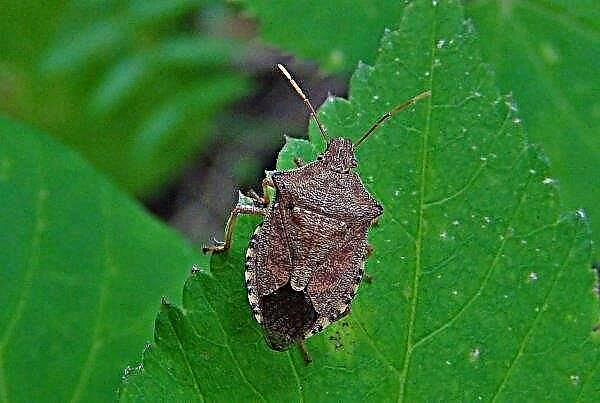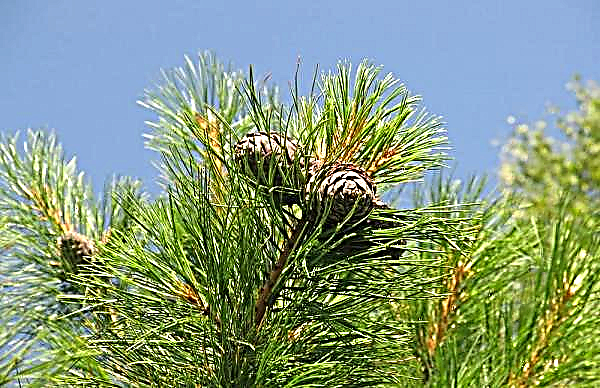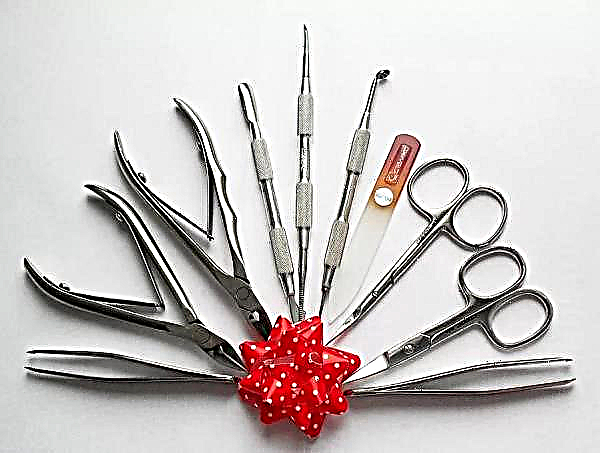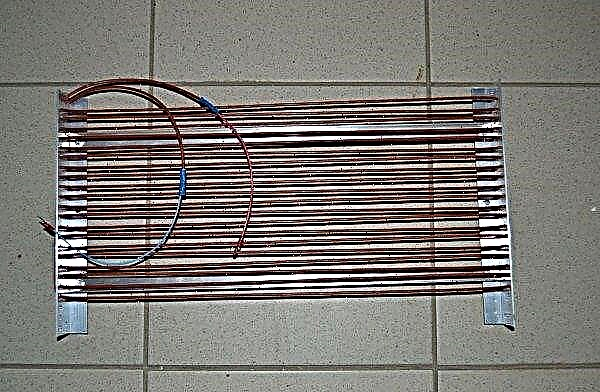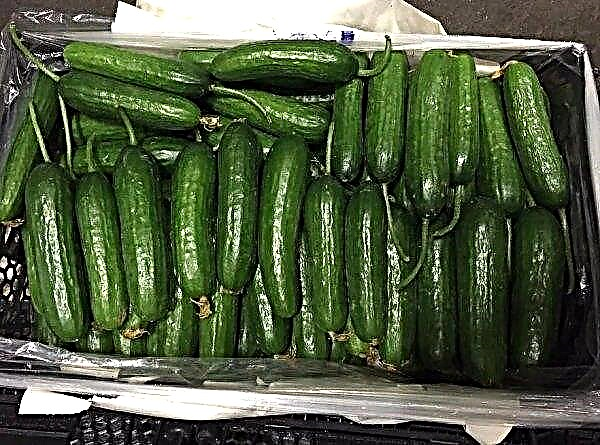In the world of domestic plants, there are those that bloom not in the warm season, but in winter, such plants include the Decembrist (Schlumbergera, Zygocactus, Christmas tree, Christmas cactus, Decembrine), which blooms in November, December and January. However, it happens that he does not live up to the expectations of his owners to see beautiful flowers in the cold weather. Why this happens - we will tell in this article.
Basic Decembrist Care
The Decembrist (in Latin Schlumbergera, Zygocactus, Epiphyllanthus, Epiphyllum, Opuntiopsis, Zygocereus) is a plant from the cactus family that naturally grows on trees without parasitizing. The flower was given the scientific name of Schlumberger by the name of the French cactus collector Frederic Schlumberger.
Important! Despite belonging to the cactus family, there are no thorns in the Decembrist.
In the modern world, the plant is actively grown as a room flower. This is a shrub with flat jointed shoots with jagged edges. Bloom in the cold season of irregular shape with tubular flowers of white, pink, red, orange or light purple. Decembrist care is based on the following principles:
Decembrist care is based on the following principles:
- The right place - it must be warm, moist, direct sunlight is undesirable, for this reason the window sill for the plant is not suitable.
- Choosing Good Soil - acidic (PH = 5), loose, consisting of sheet soil and sand, mixed in equal proportions, with the addition of peat.
- Correct pot selection.
- Compliance with temperature conditions - within the range of +12 ... + 25 ° С, but at approximately the same level without sharp fluctuations.
- Lack of bright lighting.
- Periodic transplant - once every 1-2 years.
- Moderation in watering while there is no drought.
- Top dressing according to the growth period.
- Correct cropping - the formation of the crown without the help of cutting objects, unscrewing by hand.
- Plant monitoring, timely detection and treatment of diseases, removal of pests.
Why the Decembrist does not bloom at home
If the zygocactus in your home has stopped blooming, it means that you did not comply with the conditions necessary for its cultivation.
Did you know? Some people believe: if the Decembrist does not bloom or the flowers fall — it’s a nuisance if it bloomed — to the money.
Most often, the problem arises because:
- the microclimate is not respected;
- do not observe the rest period;
- incorrectly pick up a pot;
- injured during transplantation;
- no measures are taken to destroy pests;
- the state of the roots and shoots of the plant is not controlled.

Microclimate
The absence of flowers in the Decembrist may be associated with such climatic problems:
- Too warm. The plant blooms in cold conditions, so at elevated temperatures it may not receive a signal for flowering.
- Too cold. In nature, the plant lives in a warm tropical climate, so frost damage it.
- Sudden temperature drop during flowering.
- Too light. Direct sunlight causes leaf burns. In addition, in nature, a cactus grows on trees in the shade of their foliage, so the abundance of light is alien to him. You can get rid of the problem with the help of curtains, blinds, shadows from other plants.
- Too dark. Lack of sunlight can lead to one-sided flowering or its absence.
- Excess moisture. In the period between flowering, the plant should receive moisture in a moderate amount, it should not linger in the pot. Normal moisture levels can be maintained by spraying.
- Lack of moisture during flowering. For the flowers to bloom, they need more water, so with the beginning of flowering, the abundance of watering should be higher.
- Wrong place choice. Near the battery, the problem will be too dry air for the cactus, in the southern windows - an excess of light, near the window - drafts. A nice place would be an unheated balcony without bright sunlight.

No rest period
Zygocactus growth periods are as follows:
- Before flowering - in September and October.
- Bloom - from November to January.
- After flowering - in February and March.
- Period of active growth - from April to August.
Important! Do not use nitrogen fertilizers for feeding during flowering, as they delay its onset.
It’s time for pruning, minimal watering, no fertilizers. To wake the plant, during the flowering period it is transferred to a warm place with a higher level of lighting, they begin to water more actively, fertilize with phosphorus and potassium fertilizers. Care during the period of active growth includes:
Care during the period of active growth includes:
- good lighting;
- Fresh air;
- plentiful watering;
- spraying;
- transplantation;
- nitrogen fertilizers.
Wrong capacity selection
The main requirement for the pot for the Decembrist is that it should not retain moisture, so several drainage holes are needed in the bottom. At the bottom of the pot lay a layer of drainage of expanded clay, foam or broken brick with a thickness of about 1/3 of the height of the pot. For the same purpose, choose a wide shallow pot.
While the plant is young, it is transplanted annually into a larger container, then the transplant is carried out with an interval of 2 years. At the same time, the size of the pot is increased by no more than 2-3 cm, since too large a capacity will cause a delay in flowering for several years. The optimal time for transplantation is March – April.
Injuries when moving or replanting
If during the transplantation damage the root system of the Schlumberger, the flower will react extremely negatively and this year you can not wait for flowering. Therefore, you need to remove it from the old tank carefully, without undue effort, shake off the earth and place it in a new tank. In this case, the removal of damaged or diseased roots is allowed. The problem may be moving or transporting the Decembrist (for example, after purchase). A flowering plant bought at a store can drop all the flowers at once when you bring it home.
The problem may be moving or transporting the Decembrist (for example, after purchase). A flowering plant bought at a store can drop all the flowers at once when you bring it home.
Important! Decembrist does not tolerate when disturbed — often rearranged or rotated, especially during flowering.
Diseases and pests
For a cactus to bloom, it must be healthy. You can recognize the presence of such diseases:
- Fusarium - a fungal disease, manifested by orange or light dents along the edges of the shoots, in which spores of the orange fungus are clearly visible.
- Rot rot - Dark, almost black rounded depressions appear along the edges of the leaves, inside there are black spores of the fungus.
- Late blight - differs in the dull color of leaves that begin to fade, rotting of the lower part of the stem, the tops of the cactus decay, the roots become soft and blacken.
- Soft rot - a bacterial disease, manifested by the appearance of mucous by touch blackening on the lower part of the stem, which spread to the upper parts of the cactus.
Decembrist is affected by such pests:
- Shield - the leaves begin to fade, brown spots appear.
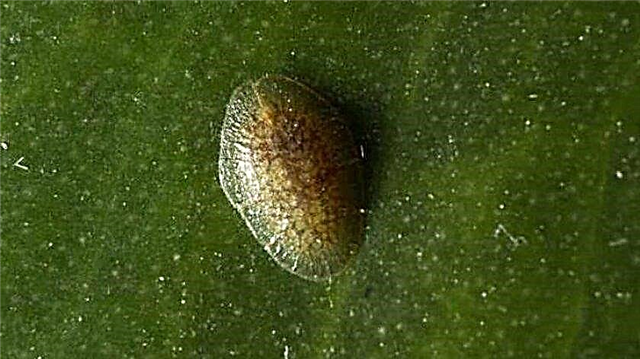
- White (mealy) mealybug - lumps in the form of pieces of cotton wool are clearly visible.
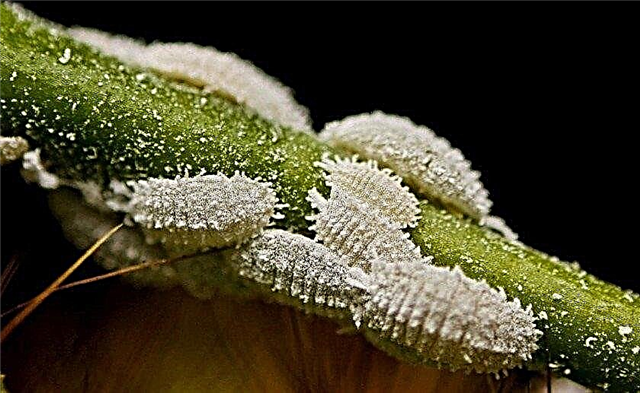
- Spider mite - can be recognized by white or gray plaque on the leaves and near the flowers.

How to make a Christmas tree blossom?
To zygocactus bloomed, you must:
- Choose the right place for the plant.
- Observe the requirements for lighting, temperature, watering, fertilizers.
- Choose an appropriate sized pot with good drainage.
- Replant the plant in a timely manner, make the correct transplant.
- Care for the cactus according to its growth phase.
- To get rid of diseases - treat with foundationazole, phytosporin, Bordeaux mixture, observe moderation in watering, provide lighting.
- To eliminate pests - you need to treat with insecticides, 40 drops of malathion, which dissolve in a liter of water, or with a soap solution.
Video: how to make Decembrist bloom
Preventive measures
In order to protect the Decembrist from problems associated with the lack of flowering, it is necessary:
- During the flowering period, the cactus is additionally highlighted.
- Do not rearrange, rotate, transplant or propagate the plant during flowering.
- Watch for the absence of sharp temperature jumps.
- Treat the pot with boiling water when transplanting.
- Treat the roots of the plant with warm water and soap if you suspect a problem.
- Disinfect new soil with potassium permanganate or annealing.
Did you know? A popular sign says: there are a lot of buds on the Christmas tree — Get ready for the cold winter.
So, Decembrist - this is one of the most beautiful cacti, but the appearance of flowers can not wait. The reason for this may be errors in the conditions of detention, the lack of an opportunity for a cactus to rest, non-compliance with the requirements for transplanting, and the Christmas tree may also get sick. Therefore, for the sake of such beauty, its owners should try and establish the necessary conditions for the appearance of flowers.




